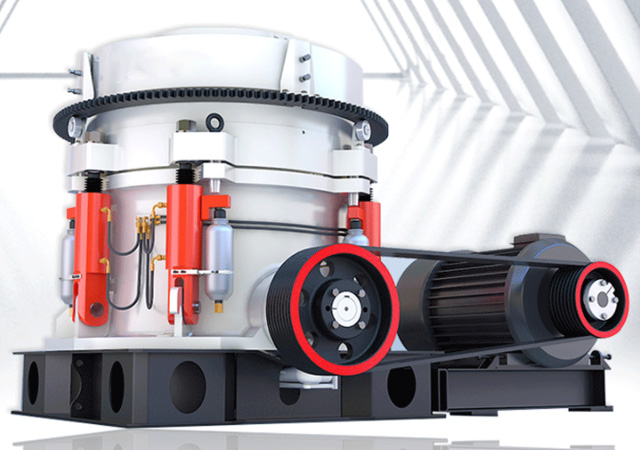A cone crusher is a crucial piece of equipment used in the mining industry for crushing and processing hard and abrasive materials. Its primary function is to reduce the size of ore particles to a manageable level for further processing. Cone crushers are widely used in various mining operations, including quarrying, metallurgy, building materials, and construction. To understand its specifications and functionalities, let’s delve into the key aspects:

1. Design and Structure:
- Main Frame: Typically constructed from heavy-duty steel or cast iron to withstand high loads and stresses.
- Cone Head: Houses the crushing chamber where the material is crushed. It is usually made of wear-resistant materials like manganese steel.
- Eccentric Assembly: This component provides the gyrating motion to the cone head, resulting in the crushing action.
- Adjustment Ring: Allows for adjustment of the crusher’s setting to control the size of the crushed product.
- Bowl Liner and Mantle: Wear-resistant liners that protect the cone head and chamber from abrasion.
- Hydraulic System: Provides hydraulic adjustment and overload protection.
2. Crushing Principle:
- Cone crushers operate on the principle of compression crushing, where the material is crushed by the eccentric motion of the mantle against the concave (bowl liner).
- As the mantle gyrates within the crushing chamber, the material is crushed between the mantle and concave.
3. Crushing Capacity and Efficiency:
- Throughput: Indicates the maximum amount of material the crusher can process within a given time frame, typically measured in tons per hour.
- Particle Size Distribution: Cone crushers can produce a variety of particle sizes, depending on the crusher’s settings and the characteristics of the feed material.
- Reduction Ratio: The ratio of the feed size to the product size, indicating the degree of size reduction achieved by the crusher.
4. Power and Drive:
- Motor Power: The power rating of the electric motor driving the crusher, usually measured in horsepower (HP) or kilowatts (kW).
- Drive System: Commonly utilizes V-belt drives or direct-drive systems to transmit power from the motor to the crusher.
5. Operating Features:
- Adjustment Options: Hydraulic adjustment allows for quick and easy setting changes to optimize the crusher’s performance.
- Overload Protection: Hydraulic systems provide overload protection by releasing pressure and preventing damage to the crusher during tramp events or excessive loads.
- Automation: Advanced cone crushers may feature automation systems for monitoring and adjusting various parameters, enhancing operational efficiency and safety.
6. Maintenance and Serviceability:
- Accessibility: Cone crushers should be designed for easy access to key components for maintenance and servicing.
- Wear Parts Replacement: Components like mantle and bowl liner should be easily replaceable to minimize downtime and maintenance costs.
- Lubrication System: Proper lubrication is essential for the longevity and performance of the crusher. Automatic lubrication systems or centralized lubrication points may be incorporated.
7. Environmental Considerations:
- Dust Suppression: Cone crushers may be equipped with dust suppression systems to minimize dust emissions during operation.
- Noise Reduction: Measures such as sound-insulating enclosures or noise-reducing materials may be employed to mitigate noise pollution.
A cone crusher designed for mining applications must be robust, efficient, and reliable to withstand the harsh operating conditions encountered in mining operations. By incorporating features such as high throughput capacity, adjustable settings, and advanced hydraulic systems, manufacturers strive to deliver cone crushers that optimize productivity while minimizing downtime and maintenance costs. Moreover, environmental considerations, including dust suppression and noise reduction, are increasingly important factors in the design and operation of cone crushers for mining applications.
